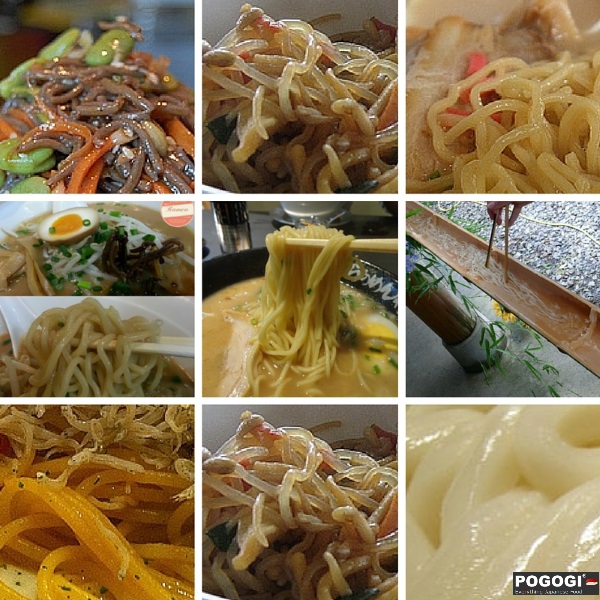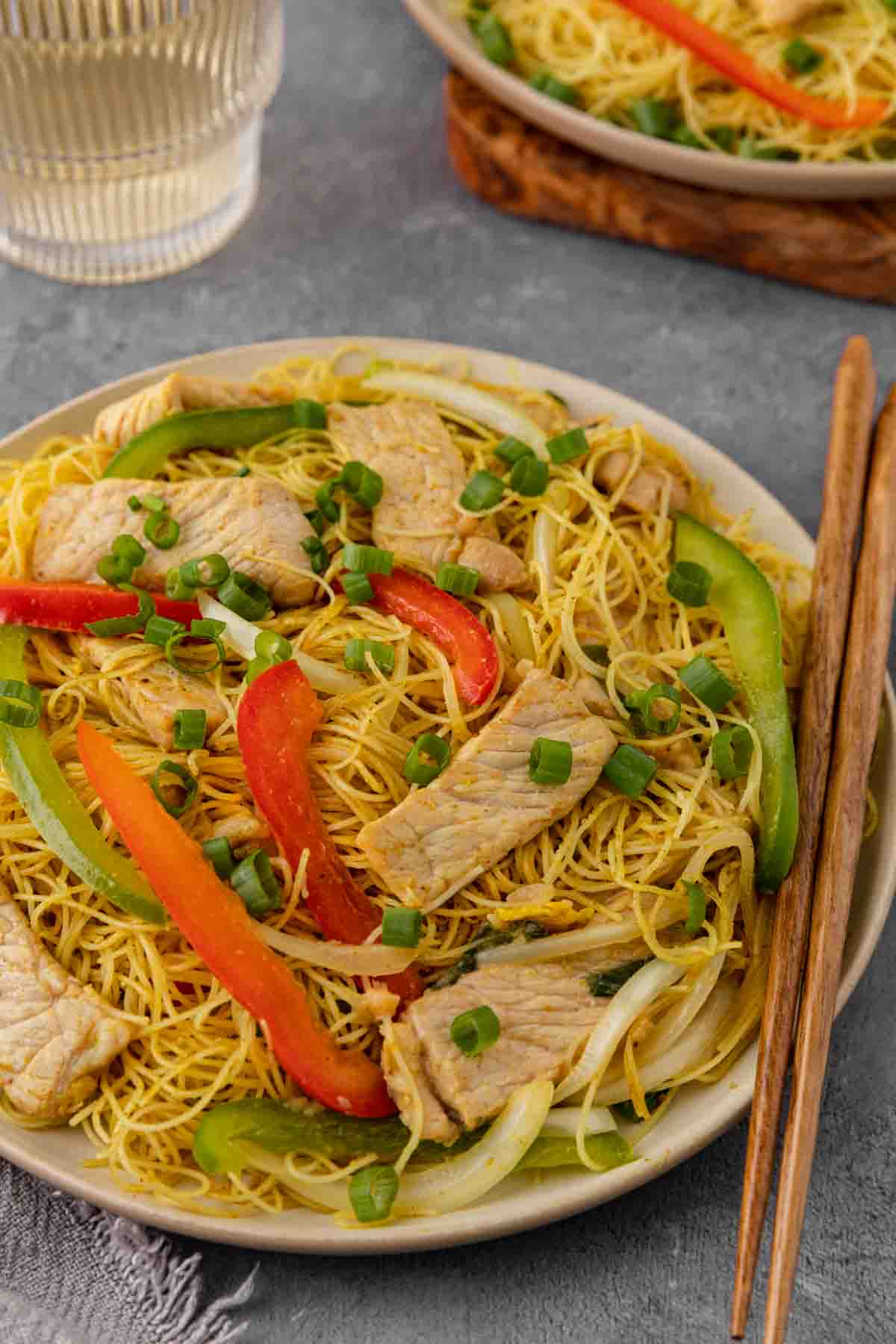Japanese noodles have become a global sensation, captivating food lovers with their rich flavors and unique textures. Whether you're a fan of ramen, udon, or soba, these dishes offer a culinary journey that reflects Japan's deep-rooted traditions and culinary expertise. This article will take you on an in-depth exploration of Japanese noodles, uncovering their history, varieties, and cultural significance.
From bustling street food stalls in Tokyo to high-end restaurants around the world, Japanese noodles have carved a special place in the hearts of food enthusiasts. The diversity of these noodles is staggering, offering something for every palate. Whether you're a vegetarian, a meat lover, or someone who simply appreciates fine dining, Japanese noodles cater to a wide range of tastes.
In this comprehensive guide, we'll delve into the world of Japanese noodles, exploring their origins, preparation methods, and regional variations. We'll also provide practical tips for enjoying these dishes, whether you're dining in Japan or recreating them in your own kitchen. Let's embark on this flavorful journey together!
Read also:Cha Eunwoo Ideal Type Everything You Need To Know About His Preferences
Table of Contents
- History of Japanese Noodles
- Types of Japanese Noodles
- Ramen: The King of Japanese Noodles
- Udon: Thick and Creamy Delight
- Soba: The Buckwheat Wonder
- Regional Variations of Japanese Noodles
- Health Benefits of Japanese Noodles
- Easy Japanese Noodle Recipes
- Culinary Techniques for Perfect Noodles
- Conclusion: Why Japanese Noodles Are a Must-Try
History of Japanese Noodles
The history of Japanese noodles dates back centuries, with influences from neighboring countries such as China playing a significant role. While noodles were initially introduced to Japan from China, the Japanese adapted and refined them to suit their own tastes and culinary traditions. Over time, these noodles became an integral part of Japanese cuisine, with regional variations emerging across the country.
Key milestones in the evolution of Japanese noodles include:
- The introduction of soba noodles during the Nara period (710–794).
- The widespread popularity of udon during the Edo period (1603–1868).
- The modernization of ramen in the 20th century, influenced by Chinese immigrants.
Today, Japanese noodles are celebrated worldwide, with chefs and home cooks alike experimenting with new flavors and techniques to keep this culinary tradition alive.
Types of Japanese Noodles
Japanese cuisine offers a variety of noodles, each with its own unique characteristics. Below, we'll explore the three most popular types: ramen, udon, and soba.
Ramen: The King of Japanese Noodles
Ramen has become synonymous with Japanese cuisine, known for its rich broth and chewy noodles. This dish originated in China but was adapted by the Japanese to create a unique flavor profile. Ramen is typically served in a savory broth, often made from pork or chicken bones, and topped with ingredients such as sliced pork, seaweed, green onions, and soft-boiled eggs.
Popular ramen styles include:
Read also:Unveiling The Extraordinary Life Of Miss Raquel Molly Little
- Tonkotsu: A creamy, pork bone-based broth.
- Shoyu: A soy sauce-based broth with a lighter flavor.
- Miso: A hearty broth made from fermented soybean paste.
Udon: Thick and Creamy Delight
Udon noodles are thick, chewy, and made from wheat flour. They are often served in a hot broth or chilled with a dipping sauce, making them versatile for all seasons. Udon's simplicity allows for a variety of toppings and flavors, making it a favorite among both locals and tourists.
Common udon dishes include:
- Kake Udon: Udon served in a light dashi broth.
- Tempura Udon: Udon topped with crispy tempura pieces.
- Curry Udon: Udon served in a rich, spiced curry broth.
Soba: The Buckwheat Wonder
Soba noodles are made from buckwheat flour, giving them a distinct nutty flavor and nutritional benefits. These noodles are often served cold with a dipping sauce or hot in a broth, depending on the season. Soba is not only delicious but also considered healthier than other noodle varieties due to its high fiber content.
Popular soba dishes include:
- Zaru Soba: Chilled soba served on a bamboo mat with a dipping sauce.
- Kitsune Soba: Soba topped with a piece of fried tofu.
- Tori Soba: Soba served with chicken and vegetables.
Regional Variations of Japanese Noodles
Japan's diverse geography and climate have led to the development of unique regional noodle dishes. Each area boasts its own specialty, reflecting local ingredients and traditions.
Some notable regional variations include:
- Sapporo Ramen: Known for its miso-based broth and rich flavors.
- Hakata Ramen: Famous for its thin, straight noodles and tonkotsu broth.
- Inaniwa Udon: A specialty of Akita Prefecture, known for its delicate texture.
- Ni-hachi Soba: A traditional soba dish from Niigata Prefecture, served with a strong dipping sauce.
Health Benefits of Japanese Noodles
Japanese noodles not only taste delicious but also offer several health benefits. Soba noodles, in particular, are a great source of fiber, protein, and essential nutrients such as vitamin B1 and magnesium. Udon, while higher in carbohydrates, can be enjoyed in moderation as part of a balanced diet.
Key health benefits of Japanese noodles include:
- High fiber content in soba noodles promotes digestive health.
- Low-fat options make Japanese noodles suitable for weight management.
- Nutrient-rich ingredients in noodle broths provide essential vitamins and minerals.
Easy Japanese Noodle Recipes
For those interested in recreating Japanese noodle dishes at home, here are a few simple recipes to try:
Simple Miso Ramen
Ingredients:
- 4 servings of ramen noodles
- 4 cups of chicken or vegetable broth
- 2 tablespoons miso paste
- 1 tablespoon soy sauce
- 2 green onions, chopped
- 1 boiled egg, sliced
Instructions:
- Bring the broth to a boil in a pot.
- Add miso paste and soy sauce, stirring until dissolved.
- Cook the ramen noodles according to package instructions and add to the broth.
- Garnish with green onions and sliced egg before serving.
Chilled Soba with Ponzu Sauce
Ingredients:
- 4 servings of soba noodles
- 1 cup ponzu sauce
- 1 cucumber, thinly sliced
- 1 tablespoon toasted sesame seeds
Instructions:
- Cook the soba noodles according to package instructions and rinse under cold water.
- Serve the noodles chilled on a plate or in a bowl.
- Top with cucumber slices and sesame seeds.
- Serve with ponzu sauce on the side for dipping.
Culinary Techniques for Perfect Noodles
Mastering the art of Japanese noodle preparation requires attention to detail and practice. Here are a few tips to help you achieve restaurant-quality results at home:
- Always cook noodles in plenty of water to prevent them from sticking together.
- Rinse cooked noodles under cold water to remove excess starch and improve texture.
- Use high-quality ingredients, such as fresh broth and premium noodles, for the best flavor.
- Experiment with different toppings and garnishes to personalize your dishes.
Conclusion: Why Japanese Noodles Are a Must-Try
In conclusion, Japanese noodles offer a fascinating glimpse into Japan's culinary heritage and cultural diversity. Whether you're savoring a steaming bowl of ramen on a chilly day or enjoying chilled soba during the summer months, these dishes provide a sensory experience that delights the palate and warms the soul.
We encourage you to explore the world of Japanese noodles further by trying new recipes, visiting authentic Japanese restaurants, and sharing your experiences with others. Don't forget to leave a comment below or share this article with your friends and family!
For more insights into Japanese cuisine and other fascinating topics, be sure to explore our other articles. Happy cooking and bon appétit!
Data source: Japan Guide, Tofugu


